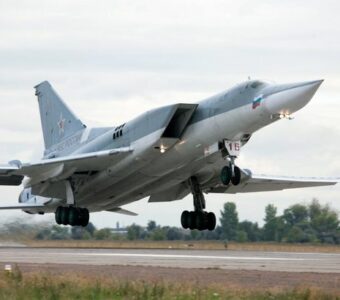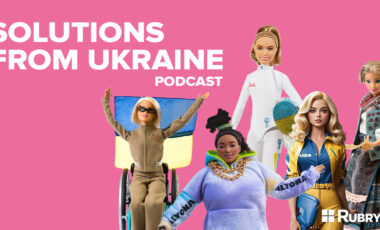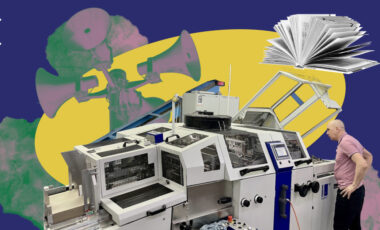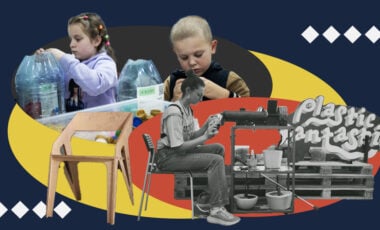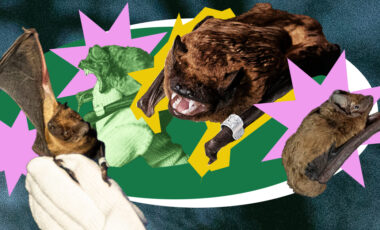When your native language is on the verge of extinction. How they save Crimean Tatar in Ukraine
After Russia occupied Crimea, preserving the Crimean people’s language and culture has been even more challenging. We explain how compassionate people create life conditions for the Crimean Tatar language in mainland Ukraine.
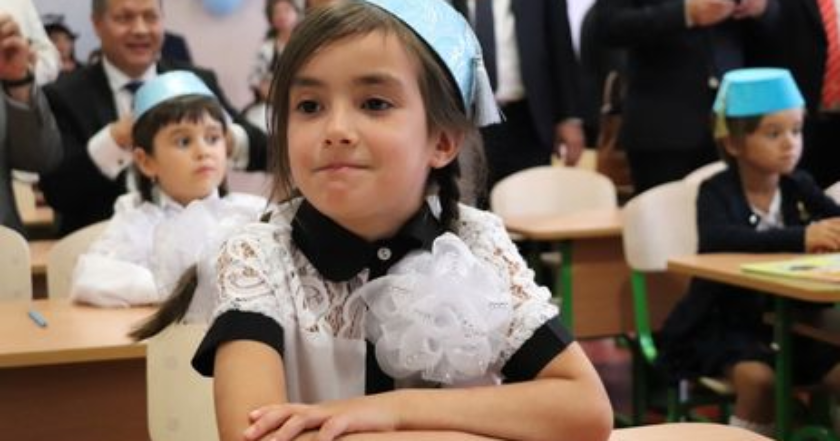
International Mother Language Day, celebrated annually on February 21 at the UNESCO initiative, honors the language the mother speaks to her baby from birth. The Mother Tongue Festival was launched in 2000 to support endangered languages as a sign of a person's cultural and mental affiliation. Surely, the larger globalization becomes in the modern world, the more acute the demand for individuality is. The living language used in education, literature, science, cultural projects, and the media is the key to preserving the people and their identity in a globalized world.
This day's annual celebration is used to draw attention to minorities with less than 10,000 population who actively speak their native language. Often these languages aren't passed down to the next generation and are forgotten.
There are 6,000 spoken languages on the planet, and about half of them are under the threat of extinction. In 2003, Ukraine ratified the European Charter for Regional or Minority Languages. The charter's primary purpose is to protect the languages traditionally used by minorities within each state. By signing this document, Ukraine has committed itself to protect regional languages from extinction, creating opportunities for their learning in educational institutions and their use in the media and the judiciary. Crimean Tatar is one of the 13 minority languages covered by the Charter.
The state of the Crimean Tatar language is depressing. For decades, it has lost its native speakers, the linguistic connection between the generations has disappeared, and the occupation of the Crimean peninsula with some families finding themselves on the mainland and some remaining in the occupied territories has accelerated this sad process. According to UNESCO, Crimean Tatar is one of the most endangered languages.
What's happening with Crimean Tatar now?
Like many other national minorities, Crimean Tatars see preserving their language, identity, and culture as the primary task of contemporary times. This task includes preserving the Crimean Tatar language among the elderly generation and passing it down to the younger generation. Popularization, creation of large-scale cultural projects in the Crimean Tatar language: production of cinema, TV, and radio programs. Preserving and passing down musical traditions of the Crimean Tatars, encouraging young singers, writing poems and songs. Printing literary works, periodicals, and textbooks.
All this, of course, should become a full-fledged part of state policy in Ukraine. Some steps have already been taken. For instance, in January this year, the Government of Ukraine published a draft of the long-awaited Concept for developing the Crimean Tatars language by 2032. "It's a strategic issue not only for the indigenous people but also for the entire Ukrainian nation," Oleksii Reznikov, Minister for Reintegration of the Temporarily Occupied Territories of Ukraine, stated.
So far, in Ukraine, the Crimean Tatar language can be mastered only in two universities.
The Taras Shevchenko National University of Kyiv became the first higher education institution in mainland Ukraine, where the specialty "The Crimean Tatar Philology" launched; in 2014, it started accepting entrants. Crimean Tatar is also studied at the Institute of Philology and Journalism of the Volodymyr Vernadskyi Tavriia National University, which was evacuated from the occupied Crimea.
"Unfortunately," says Svitlana Kuzmina, director of the Institute of Philology and Journalism at TNU, "our university doesn't have a Crimean Tatar language department: we cannot afford such a luxury because of the meager state funding." But professors and students are majoring in the "Philology. Crimean Tatar language and literature" specialty; 10 undergraduate and 2 graduate students. Not many students, because we have difficulties with employment."
There are also problems with the number of scholarship spots, books, and textbooks. Professors and students bring books on their own and search for the necessary materials on the Internet.
However, it's too early to hang the jib; the demand for experts in the Crimean Tatar language and literature is now growing in Ukraine. Not solely the representatives of the indigenous people of Crimea are interested in it. As the Minister rightly noted, "Being proficient in 'Ukrainian Turkic,' a person discovers the entire Turkic world, which numbers about 170 million people."
The Crimean Tatar communities understand it best, initiating and often organizing Crimean Tatar language centers for children on their own, creating the most favorable conditions for development almost completely without centralized funding.
Crimean Tatar for children
The "Alem" public organization was established in Crimea 11 years ago and has operated in mainland Ukraine for the last 7 years.
"Over the years," says Lenura Khalilova, coordinator of the Crimean Tatar Humanities Section, "we've gained numerous friends, partners, like-minded people, and thanks to their support, we can implement incredibly bold and useful projects! At our initiative, in 2018, a section "Crimean Tatar Humanities" was opened at the Minor Academy of Sciences of Ukraine, which allows students from all over Ukraine to prepare scientific papers on the history and culture of Crimean Tatars and present their results at an all-Ukrainian competition.
Over the working years of the section, more than 50 scientific papers have been defended; annually, the all-Ukrainian stage of the competition receives about 11 papers from each region of Ukraine. And not only Crimeans participate. We all remember the work of a little Ukrainian girl, who compared Ukrainian and Tatar fairy tales in her work and translated a Crimean Tatar fairy tale into Ukrainian."
The topics of MASU participants' scientific research are diverse: from traditions and customs, history and literature of the Crimean Tatars, and traditional choreography and musical instruments of the Crimean Khanate to the traditions of Crimean Tatar cuisine and interior design in Crimean Tatar houses. All works are prepared and presented at the request of young scientists in Crimean Tatar or Ukrainian.
Also within the MASU two years ago, NGO "Alem" in partnership with Volodymyr Vernadskyi TNU created courses on the Crimean Tatar language, culture, and history called "Fidan," which means "sprout." The project became a kind of art hub that brought teachers, children, and parents together to create a special enriching atmosphere in the Sunday school for learning the language of the indigenous population of Crimea. Now the "Fidan" studio works online but hopes to return to international cultural and educational trips, and visits to museums, theaters, art galleries, and summer schools in various scientific fields after the quarantine, which proved to be beneficial and very popular with children in "pre-pandemic" times.
Sensing the demand for language courses from students' parents, "Alem" is actively working to create a program for adults, and launch an innovative and educational space for online promotion of talented young people from Crimea and boosting social stimulation of young people. "It is the center that will become a platform for implementing a project making our native Crimea even closer to the hearts of Ukrainians!"
More than just a language
The "Crimean Family" NGO was established in 2014 after the occupation of Crimea when hundreds of Crimean Tatar families were forced to leave their homeland. "Here in Kyiv," says Anife Kurtseitova, head of the organization, "we saw the need to unite our families, help each other morally, and most importantly, create conditions to preserve our language and culture. We started to organize courses for children; at first, it was Crimean Tatar language lessons, and these lessons started with seven children. Soon, other families began to join us, we expanded classes, found teachers for music and dance lessons. I was searching for a teacher of the history of Crimea and Crimean Tatars for a long time, and a couple of years ago, we started the world's first lessons in our native history. We also organized national embroidery classes for older children and parents. Over the years, the organization has become one of the largest organizations; more than 100 children study permanently, there are 10 professional teachers. We set a lot of tasks to ourselves and try to fulfill them. Our center regularly hosts various events, like competitions for native language readers, Olympiads on the history of Crimea and Crimean Tatars, national holidays of Crimean Tatars, literature evenings, commemorative events dedicated to various important dates of our people. We've recently completed one of the most important projects: we've released the first textbook on the history of Crimea and Crimean Tatars in two languages, Ukrainian and Crimean Tatar. We also created an educational platform where we taught a course on Crimea and Crimean Tatars history, a series of interesting informative lectures on the history, culture, and art of our people. We've been working on this project for several years and are happy to share our experiences with everyone. Anyone from anywhere in the world can enter the Platform and gain important knowledge."
The Crimean Family speaks with pride: children studying at the center already know their history very well and understand the important dates of their people.
The center's teachers are excellent specialists, experts in their field, who love children and understand the importance of such classes far from their homeland. The center employs two linguists, teachers of the Crimean Tatar language, Elmira Kurtmollaieva, and Mamure Chabanova. Teachers of music and vocals are the Honored Artist of the Autonomous Republic of Crimea and Ukraine Elzara Batalova and Cemil Komurci, a talented Crimean Tatar musician. Lessons in the history of Crimea and Crimean Tatars are taught by a young writer, author of a series of books on Crimean Tatar topics, Bekir Ablaiev. And many other professionals. Iryna Dryha, a leading turkologist, consults and helps on methodological issues.
The Crimean Family Children's Center operates housed by 165 schools in Kyiv. "We occupy five classes, an assembly hall, a music room. Another room was recently renovated, now it's a creative workshop for our art lessons. We created it completely in the Crimean Tatar style. It's our dear place," Anife Kurtseitova explains.
And although now, most of the center's classes are online, the number of lessons or tasks isn't decreasing. "We finished a book on history, immediately started implementing the next project: these are the first children's manuals and workbooks in the Crimean Tatar language for children of all ages using the Latin alphabet. So far there are no such books, and our teachers prepare lessons without important manuals. Our work is active and I think we'll have an excellent result. We're also filming several useful video lectures on our culture, preparing to record several songs of our soloists, preparing conferences on the Crimean Tatar language."
Kherson region is the second home for 12,000 Crimean Tatars
Not by Kyiv alone. In the Kherson region, where numerous Crimeans traditionally live, classes taught in the Crimean Tatar language have been opened for the third year in a row in the village of Novooleksiiivka of the Henicheskyi district.
After the occupation of Crimea, the Kherson region became a kind of "rescue island" for Crimean Tatars: those who felt pressure from the occupants came here, and those who could no longer get to Crimea settled here. Almost 40% of Novooleksiiivka's residents are Crimean Tatars. Even before the occupation, they settled here, returning home after deportation, when they couldn't settle in Crimea.
They study the Crimean Tatar language and literature in Novooleksiivska school from the first to the eleventh grade; they cover all students. The school has 645 students, including 360 children from Crimean Tatar families. Novooleksiivska School №1 is the only one in mainland Ukraine where Crimean Tatar language and literature are taught to students from the first to the eleventh grades as a subject.
And in Kherson, the cultivation of the language of Crimeans was undertaken by a charity organization, the "Kuresh" Crimean Tatar Cultural and Sports Center, and the Kherson Regional Library named after Oles Honchar.
Why is the language issue one of the most acute with Crimean Tatars?
For the third year in a row, Leylâ Caksim, the chairperson of the Kuresh organization board, has been organizing the Crimean Tatar language group. Although Crimean Tatars have lived in the region for over forty years, there have never been such courses in Kherson. At the initiative of "Kuresh," the workshop was created, housed by one of the city schools. Opening such courses is a vital necessity. Preserving the language and culture of the people who lost their homeland again because of the Russian occupation of Crimea is the primary task of the charity community.
"It's a hard topic for our people; young people are losing their language," says Leylâ Caksim. "Crimean Tatar is spoken at home, but mostly, it is the oldest generation. I'd like our kids to speak it fluently."
Initially, the entire work was carried out at the expense of patrons, but in 2020, after applying to the city education department, part-time pay was officially allocated for the Crimean Tatar teacher. Now in Kherson school №12, children of three nearest schools master subtleties of their ancestors' language three times a week.
"We were very lucky with the teacher," continues Leylâ Caksim, "Lilia Abliamitova is a wonderful specialist. Her specialization is Ukrainian and Crimean Tatar; she's also a migrant and therefore, like anyone, she understands the importance of our common cause. We want to create an authentic environment and children to learn their mother tongue. Unfortunately, everyday life usually occupies us, older family members take their language away with them. Our goal is not to let it go into oblivion."
The Association of Crimean Tatar Teachers, the Kuresh organization communicates closely with, helped with the curriculum and methodological recommendations. A significant part of the materials can be found on the Internet. They print and copy a lot of materials, from coloring books to art publications, show videos, and cartoons in the language of the Crimeans, arrange creative meetings: everything to make it versatile and interesting for children.
The main problem is financial. Thanks to the support of the school principal, it was possible to wheedle teacher's salary out, but the study group doesn't even have its own computer. There's a great lack of state support. According to Leylâ Caksim, there's currently no law that would support the Crimean Tatar minority.
And in recent years, the Oles Honchar Kherson Library works closely with the city's Crimean Tatar community.
Thus, a wonderful tradition of collecting books has become a holiday called "Languages are different, but the soul is the same!" and dedicated to Mother Language Day. All national diasporas are invited to participate, including the "Kuresh" Crimean Tatar Cultural and Sports Center.
In 2019, on the occasion of the 75th anniversary of the deportation of Crimean Tatars, artists of the Henichesk district presented a creative exhibition "Our Crimea" in the library halls, which included an exhibition of fine arts dedicated to the national hero of the Crimean Tatar people, Noman Çelebicihan, a photo exhibition with Crimean Tatar family photos and pictures of modern events related to the occupation of Crimea, and the "Crimean Color" art exhibition, picturesque landscapes of Crimea, created with love and skill.
Last year, during the quarantine, a video flash mob "Shevchenko's Word" was launched at the initiative of the book collection staff; the participants recited the works of the Great Kobzar in their native language. Leylâ Caksim also took part in a video flash mob and read the poem "There were wars and military quarrels…" in Crimean Tatar.
The library doesn't stop there. In 2021, the Gonchar Library launches a new cultural and educational project called "Space Where Cultures Meet"; within the project, they plan further interesting cooperation with the centers of all national minorities in the Kherson region.
A few important words in Crimean Tatar:
- Adalet — justice
- Adet — tradition
- Ana — mother
- Topraq — land
- Sayğı — respect
- Bala — child
- Vatan — homeland
- Ruh — spirit
- Janım — dear, beloved
- Qırım — Crimea
- Namus — honor
- Barışıq — peace
- Sağlıq — health
- Til — language
- Sevgi — love
Also, read how Crimeans are creating change in Ukraine, and where Crimean migrants should turn to for help.













